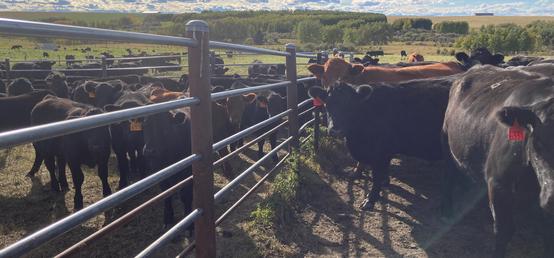Regardless of when and how many calves you will wean, methods of reducing stress on fresh weaned calves is of great interest to cattlemen and of benefit to cow-calf operations. Traditional methods of weaning calves typically involve total separation of calves from cows by moving calves to a new pasture or dry lot pen.
Fenceline weaning is a management process that allows fenceline contact between calf and dam for at least four to ten days following weaning. Fences need to be sturdy enough to permit nose to nose contact while preventing nursing. The objective of fenceline weaning is to allow social interaction between calf and dam while weaning the calves off of mother’s milk.
Studies have shown several benefits of fenceline weaning:
- Calves bawl and walk less for the first several days post weaning.
- Calves spend more time resting and eating during the first several days post weaning.
- Calves gain more weight in the first couple of weeks post-weaning.
- Calves that eat and drink more during the first days after weaning stay healthier.
Best Practices for Successful Fenceline Weaning:
- Move the cows and leave calves in the same pasture or lot. When this is done, calves already know location of water, feed and grazing areas. If this is not possible, locate water troughs and feeders along the fenceline where calves and cows will initially congregate increasing the likelihood calves will find water and feed early on in the process, thereby minimizing walking perimeter fences.
- Avoid adding unnecessary stress like castrating, dehorning, branding or vaccinations at the time of weaning by completing these processes several weeks prior to weaning, or after weaning is complete.
- Fencing needs to be adequate. A typical five-strand barbed wire fence will usually be satisfactory. If calves are still able to nurse through the fence, adding a single strand of electric fence offset from the main fence, possibly on both sides should be adequate.
###
Mark Johnson – Oklahoma State Extension Beef Cattle Breeding Specialist


